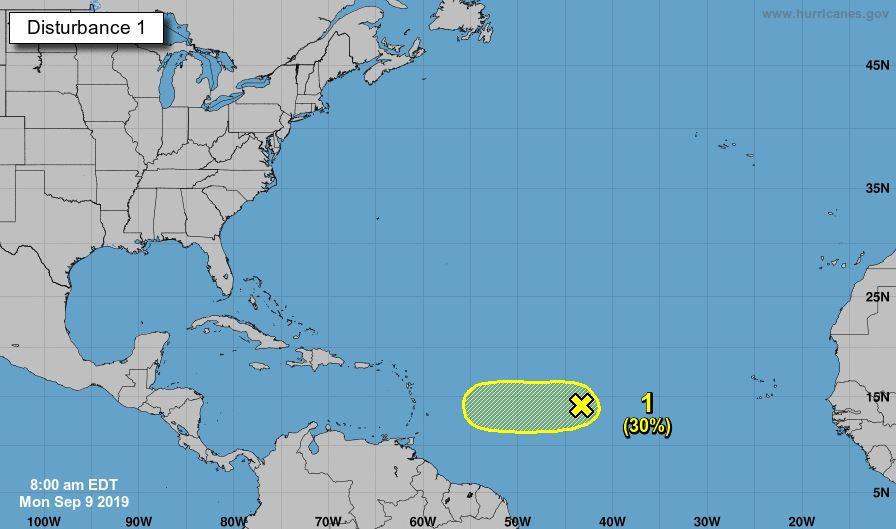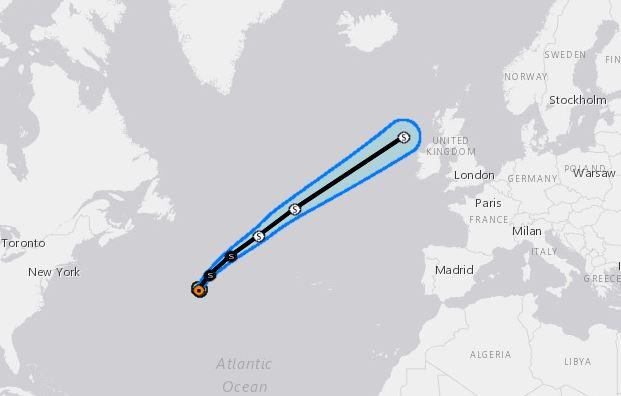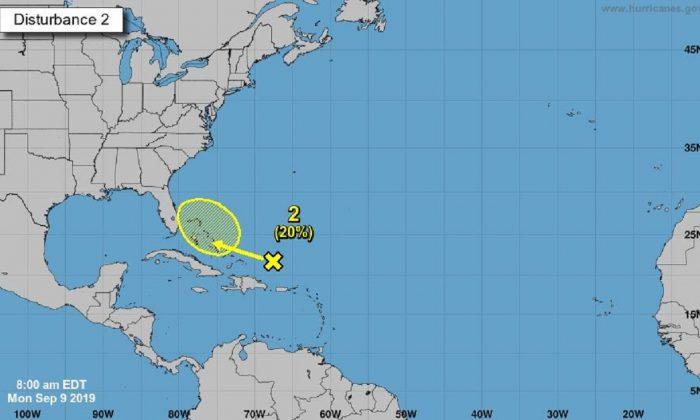The National Hurricane Center is monitoring three weather systems in the Atlantic Ocean, including one approaching the United States.
A weather disturbance currently situated a few hundred miles north of the Greater Antilles is moving towards the Bahamas and Florida, a forecaster with the center said.
“Environmental conditions could become a little more conducive for development when the disturbance moves near the Bahamas and Florida late this week.”
The chance of formation are low through 48 hours, near 0 percent. Through five days, the chance of formation is around 20 percent.

Another disturbance is situated between the Cabo Verde Islands, off the coast of Africa, and the Windward Islands in the West Indies, the center said.
The “area of low pressure, associated with a tropical wave,” is producing disorganized showers and thunderstorms.
“Some slow development of this system is possible during the next two or three days before upper-level winds become unfavorable for tropical cyclone formation. This system is expected to move generally westward across the tropical Atlantic Ocean for the next several days,” according to the forecast.
The chance of formation through 48 hours is 20 percent and the chance of formation through five days is 30 percent.

Tropical Storm Gabrielle
Tropical Storm Gabrielle, meanwhile, was located away from the United States and didn’t appear to be moving toward the country.Located east of the nation’s capital, the storm was tracking towards Europe. Its projected path would take it close to Ireland and the United Kingdom on Thursday, the center said.
The storm was moving north-northeast near 16 mph.
“Maximum sustained winds are near 60 mph with higher gusts. Little change in strength is expected today, but a weakening trend is likely to begin tonight. Gabrielle is expected to become an extratropical low by Tuesday night. Tropical-storm-force winds extend outward up to 80 miles from the center.”

Dorian Weakens Further
Hurricane Dorian weakened further to an extratropical storm, the center said in its final advisory of the system early Monday.Winds were down to 60 mph as the storm moved over the cold waters of the Labrador Sea.
Dorian slammed into the Bahamas, wrecking numerous buildings and killing dozens.
The United States mostly avoided damage, though the storm did impact Florida, Georgia, North Carolina, and other states.
North Carolina authorities said over the weekend that Ocracoke, North Carolina, was a focus of emergency managers, doctors, and volunteer groups. About 100 National Guard soldiers remained on the island to support recovery operations. Insurance adjusters were planning to visit to help homeowners and businesses.





